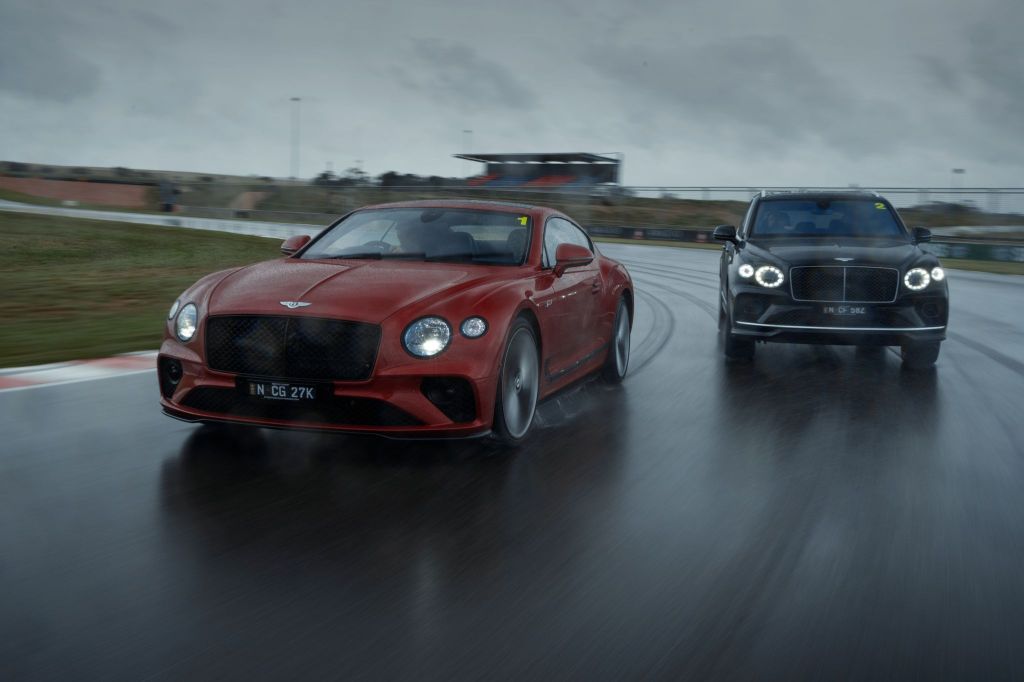Mulliner’s chief commercial officer, Paul Dickinson, relaunched the division two years ago. He claims he’s tripled production of bespoke Bentleys since.
Key Takeaways
- Bentley posted record sales for the first six months of 2022, delivering a half-year profit of around $615 million
- Mulliner relaunched in 2020 with a view to increase Bentley Motors’ revenue
- Bentley claims it’s on track to achieve its Beyond100 carbon neutrality strategy.

Bentley Motors has long been known for its luxury and vehicles: think the Bentley Flying Spur and the Bentley Mulsanne.
But in recent years, the 103-year-old company has been making a name for itself in the performance category. The release of the twin turbo V8 version of the Bentley Continental GT in 2020 marked this transition, and the company has continued to pave its way in this category with the release of the GT Speed in 2021.
It was clear that they drive revenue – that’s the key to success in the luxury market, and price positioning.
– Paul Dickinson, chief commercial officer, Mulliner
The automaker’s latest figures are strong, with the company posting record sales for the first six months of 2022, delivering a half-year profit of around $615 million. That’s more than it achieved in 2021 in total.
The company’s personalised division, Mulliner, also claims to be growing thanks to a distinct strategy change led by chief commercial officer Paul Dickinson.
Mulliner’s history actually dates back to 1559, when the business was known for saddle making. That evolved into coach building in the 1760s and in 1959, was acquired by Bentley. Dickinson claims he’s tripled production of bespoke Bentleys since the Mulliner re-launch.
Dickinson has been at Bentley Motors for nearly 10 years, starting off in the business’ financial planning division. It was there that he claims he saw the potential to increase Bentley’s revenue via its Mulliner bespoke division.
“One of the pieces of work we did at financial planning was looking at how to grow Bentley to be a successful business,” he says.
“We looked at the competition, Ferrari, Lamborghini, Porsche and all those kind of guys, to see why they were so profitable. It was clear that they drive revenue – that’s the key to success in the luxury market, and price positioning.
“We had this brand called Mulliner that we weren’t leveraging, so we wanted to take this brand and drive it up to be the pinnacle, which would then help pull the rest of Bentley up,” he says.
The Mulliner portfolio was split into three arms: Bentley Mulliner Collections, Bentley Mulliner Classic and Bentley Mulliner Coachbuilt. The Coachbuilt and Collections division are the bespoke, high-performance Bentleys, but the Classic division is focused on rebuilding the classics, like the original Bentley Blower – the first Bentley to win the La Mans race in 1929 and 1930.
Nowadays, Dickinson, who is an accountant by trade, deals directly with wealthy clients all over the world to customise their Bentleys, aiming to bring their wildest dreams to life. Stone veneers? Why not. Painted wheels? Absolutely. Tweed-trimmed door inserts? Throw it in. The options are, apparently, endless. The company even offers a ‘themed’ Bentley. The design team created a London-themed range, complete with an embroidered crown on the headrest for China. They’ve also developed a boating-themed range, complete with pinstripe seats and a nautical colour pallet.
Dickson says the company sells more one-of-one Bentleys in the Middle East, while in America, more cars tend to be sold from directly dealerships. He’s still pinning down the Aussie customer, but believes they’ll sit somewhere in the middle.
Bentley, which is part of Volkswagen Group, also claims it’s on track to achieve its Beyond100 strategy, which is to achieve carbon neutrality by 2030. That means it is winding down its W12 engines by the end of the decade, and planning for an electrified fleet to eventually take their place.
This is largely in line with the rest of the luxury car market. Rolls Royce plans to deliver its first electric car, Spectre, by the end of 2023, and plans to be fully electric by 2030. Mercedes-Maybach also has an electric SUV in the works and Lamborghini will spend 1.8 billion euro to produce a fresh range of hybrid vehicles by 2024.